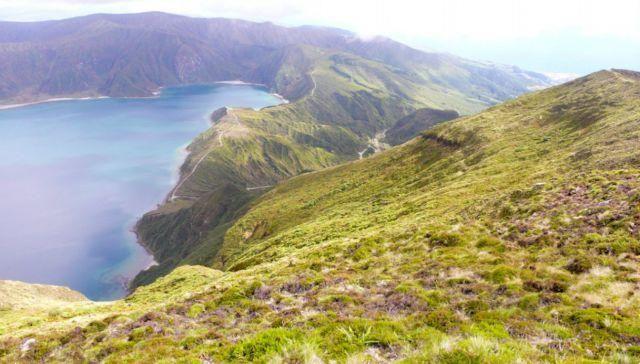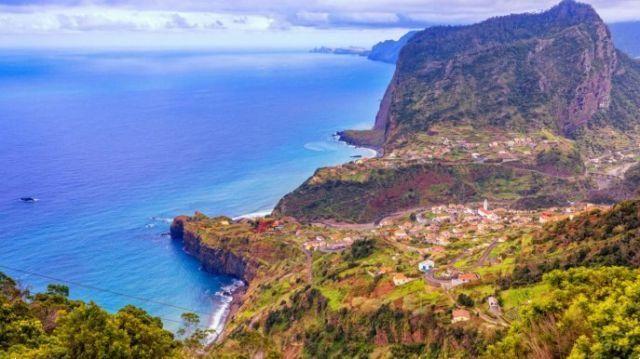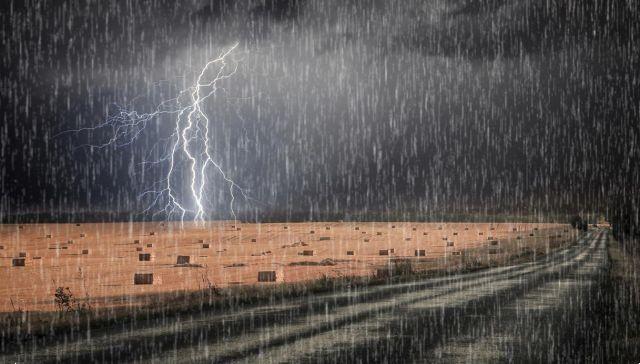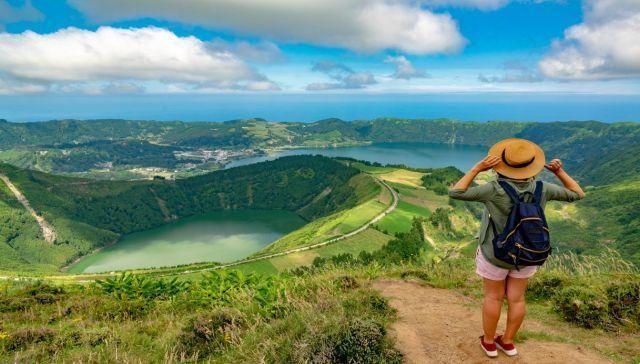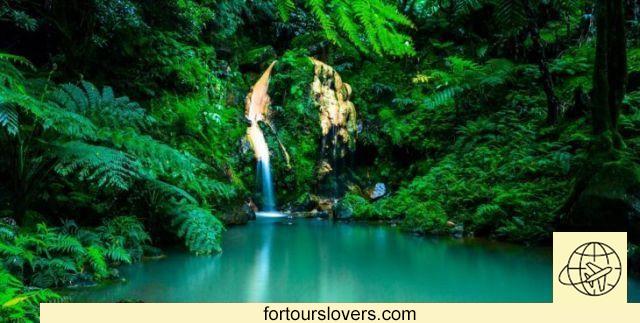
Azores
12 things to do and see in the Azores and 2 not to doOne of the proverbs most popular at Azorrre reads: "If the weather does not convince you, wait half an hour". In fact, the meteorological variability is one of the main characteristics of this archipelago of nine islands in the middle of the Atlantic. The weather can change several times in the same day and the reason is due to the presence of the anticyclone of the same name. If on the one hand, in fact, the Azores anticilone in Europe brings warm and beautiful days; on the other hand, instead, it condemns the territory of origin to greater instability. It must be said, however, that there is the flip side of the coin. The rains, together with the volcanic soil and the mild temperatures all year round, have allowed the local population to live off the proceeds of agriculture. Still, although tourism has been the main source of income for years, agriculture remains a very important voice in the local economy. Breeding is also widespread, to the point that the number of grazing cows equals that of the resident population. So green and blue everywhere: this is the symbol of the Azores, a favorite destination for tourists who love nature and outdoor activities. Not only trekking, but also Diving, snorkeling e whalewatching. Whales, sperm whales and dolphins often lap the coasts of the Azores and if before whale fishing was widely practiced, for years the tourist observation has prevailed with lots of organized tours. Below are the main attractions of the archipelgo. Happy reading.
1 Furnas (Island of Sao Miguel)
Our tale of the Azores starts from Furnas, the main tourist resort of São Miguel, the largest of the islands that make up the archipelago. The atmosphere is completely different from the cars and crowds of the capital Ponta Delgada, about an hour away by car (see point 2). In Furnas, in fact, it is the lake and the dozens of sulphurous shower heads all around that dominate. Therefore a renowned spa, with several arrows in its bow. For the bathrooms there are two places not to be missed: one is the Parque Terra Nostra, hotel-garden which, right in the center of the structure, houses a large outdoor thermal swimming pool, the use of which is also allowed to those who do not stay in the hotel (see photo) the other is the Little by Dona Beija, thermal park consisting of 5 outdoor pools with temperatures between 25 and 39 ° C. The ideal place to relax after a day dedicated to trekking along the banks of the Furnas lake (lagoa das Furnas). Here too there are many things to see: first of all, the boilers, large holes in which the locals bury the cazeido, naturally steamed meat stew for 6 to 8 hours. Also worth a visit Mato José do Canto, park-garden that develops along the south-western shore of the lake. Finally, in the surrounding area we point out Northeast. Along the road that leads from Furnas to this small village of about a thousand inhabitants, various panoramic points follow one another (viewpoints) of extraordinary beauty. So be careful not to forget your camera.
2 Ponta Delgada (Island of Sao Miguel)
The presence ofairport named after John Paul II did it Ponta Delgada the main urban center of the Azores. The flight hours from the capital Lisbon are only two and a significant part of the tourist flow passes through this route. The other part, however, passes by Doors of the Sea, city waterfront equipped to accommodate daily ferries and cruise ships. Net of some drawbacks more typical of a city than an island, Ponta Delgada offers several interesting ideas. From panorama area of hill of the Ermida da Nossa Senhora da Mae de Deus, To Antonio Borges public gardens e do Palacio de Sant'Ana, Up to Chapels, a village about 13 kilometers away. Here once whaling was practiced with a lot of canning industry for the transformation of the product. However, the main tourist attraction of Ponta Delgada is the statue of Christ inside the church of the Convent of women from Esperanca. This statue, the most revered of the Azores, is carried in procession on the occasion of the Festa do Senhor Santo Cristo (every year from 4th to 10th May). A very heartfelt anniversary like all the other religious festivals of the archipelago. Taking part, therefore, represents an important opportunity to verify how much religious folklore contributes to the tourist fortunes of the area (the so-called “F” of “Festa” after the other two of “Flora” and “Fauna”). For more information visit the place: www.santo-cristo.com.
3 Sete Cidades (Island of Sao Miguel)
Il crater of Sete Cidades is a unmissable stop on a trip to the Azores. Within this caldera, in the northwestern side of the Ilha de São Miguel, a volcanic lake flows (Lagoa do Canário) green and blue. According to a popular legend, the different colors of the waters would have originated from the desperate cry of a shepherd and a princess, unable to live their love story openly. The lake can be crossed by kayak, an activity that is gaining increasing success with the public. Even the surrounding forest attracts many visitors rightly captured by the extraordinary beauty of the place. Already along the road, in fact, there are several panoramic points that deserve a stop. The most famous of all is the Miradouro VIsta do Rei (550 meters above sea level) so named at the beginning of the 900s following a visit by King Charles I and his wife Amelia d'Orleans. Not to be missed!
4 Caldeira Velha (Island of Sao Miguel)
Thermalism is not a prerogative of Furnas alone. Not far from Riberia Grande, on the north coast of São Miguel, there is another spa town that is absolutely worth a visit: Caldeira Velha. It is a natural thermal park where it is possible to bathe in two hot springs (approx. 37 ° C). The first pool is a sort of mini-jacuzzi, while in the second it is possible to take a real bath. The thermal hot spring that feeds the park is located higher than the pools and, if desired, can be reached with the help of local expert guides. In some points, in fact, the fumarolic activity is particularly intense and therefore you have to pay attention to where you walk. Returning to the park, the vegetation all around is lush. Several species of ferns present that give the idea of an exotic, almost primordial environment. The park is equipped with showers, changing rooms and toilets to meet the needs of more and more tourists during the summer. There is also a small visitor center which provides a series of useful information on the geology and hydrology of the region (the waters are the same as in the volcanic lake "Lagoa da Fogo"). As for clothing, only two precautions: wear slippers, insoles or shoes suitable for the slipperiness of the stony bottom and avoid light-colored or, worse still, white costumes. The large amount of iron present in the water could irreparably stain them. To be seen!
5 Island of Santa Maria
Santa Maria, the southernmost of the Azores islands, does not have the same tourist turnout as São Miguel. Indeed, most of the visitors come from the latter thanks to the frequent sea and air connections with Ponta Delgada (see point 2). The largest center is About Us |, where more than half of the population lives (about 3000 inhabitants out of a total of 5.500 residents) and where most of the hotels, shops and clubs on the island are concentrated. Trekking is by far the most popular activity. Several paths are available: from the entire circumnavigation of the island, to the path (PR 5) that connects Vila do Porto to Praia Formosa, one of the most beautiful beaches in the entire archipelago (see photo). This beach, on the southern side of the island, is also its main tourist attraction. One of the most popular music festivals in Portugal takes place at the end of August. Is called Sea of August (www.maredeagosto.com) and hosts the best of the Lusitanian songwriting tradition, together with several international artists. In addition to Praia Formosa, the Farol de Gonçalo, by far the most beautiful lighthouse in the Azores. It can be reached from Ponta de Castelo, a town on the south-eastern side of the island, following the signs for a hiking trail of about 7 kilometers (PR 4). The scenery overlooking the Atlantic is breathtaking. Once upon a time, the transit of whales was monitored here, whose hunting represented one of the main sources of livelihood for the inhabitants of the islands.
6 Faial Island
Faial, Pico and São Jorge are the central islands of the Azores archipelago. Distances are quite short and maritime connections are ensured all year round. This circumstance has greatly favored tourism development, to the point that one holiday in the "Triangulo" - as this part of the archipelago is called -, it is one of the most popular options among those who wish to visit the Azores. Of the three Faial is the westernmost. Although it is not very large (you can easily visit it in one day) about 15.000 people live there. The main center is Horta, a village of 6000 inhabitants, a landing place for sailors from all over the world. This is where the Peter Cafe Sport, the most famous bar in the Atlantic, a destination for sailors, diving enthusiasts and whale watching. From Horta, to be precise from the village of Ribeirinha, there is also a beautiful excursion that cuts the island lengthwise from east to west. A coast to coast that allows you to deepen the seismic and volcanic nature of the territory. Riverside, for example, it is geologically the oldest part of Faial, which originated as a result of a volcanic eruption approximately 800.000 years ago. Not only that, because it is also the suburb that most suffered the consequences of the earthquake that shook the island in 1988. Caldeira, crater of an extinct volcano with a difference in height of over 400 meters entirely passable. The luxuriant vegetation makes it one of the main attractions of the entire archipelago, also for the contrast with Capelinhos, the new volcano (see photo). This complex, in fact, originated following a series of eruptions which took place between 1957 and 1958. Also in this case the consequences on the social level were considerable, forcing a large part of the population to emigrate. Above all, the landscape is completely different from Caldeira since the erosive action of water and wind, together with a still consistent layer of ash, create an almost desert scenario.
7 Pico Island
"The mountain island", so it is nicknamed Pico because of the volcano that, with his 2351 meters above sea level, is the third largest in the whole Atlantic (see photo). Obviously, the climb to the top of the mountain is the main tourist attraction of the area. Not the only one, however. The inhabited centers of Madalena, Lajes and São Roque all 3 are worth a visit. In Madalena, for example, there are important ones dive sites (Ilhéu Seitado and Ilhéu em) and, above all, there is the Cave das Torres, the longest lava tunnel in the archipelago. The main attraction in Lajes is the Whaling Museum (Museu dos Baleiroos) which brings together numerous testimonies relating to whaling, for a long time the most important source of livelihood for the inhabitants of the archipelago. Also here, at the end of August, a very heartfelt anniversary is celebrated: the Semana dos Baleiroos, with concerts and events that recall the historical experience of the territory. The Whaling Industry Museum (Museu da Indústria Baleeira), instead, it is located at Sao Roque, a town of about 3000 inhabitants which historically owes to port fraction of Cais do Pico its economic development. In addition to the seafaring tradition, however, Pico Island is famous for its wine production. The verdelho it is the most cultivated vine variety and its importance goes beyond the commercial aspect (Madeira also boasts an important production of verdelho). THE terraced landscapes in fact, since 2004 are UNESCO World Heritage Site which recognizes and protects its high cultural contribution. Not to be missed!
8 Island of São Jorge
São Jorge is the longest (54km) and narrowest (just 7km) island of the Azores. There are those who see the image of a dragon lying there, who knows maybe inspired by the dragon that stands in the square of Candles, the main center of the island, next to the statue of the patron saint (the other small town is Calheta). The sinuosity of the territory is not the only data worthy of note. On the island, in fact, grazing cows are definitely more than the inhabitants. The first thirty thousand, while the population is less than ten thousand units. Not surprisingly, São Jorge is famous for its cheese, Cheese, of which the locals are very fond. For the rest, the island is one mecca for trekking lovers. THE There are many hiking trails and almost all of them skirt the fajãs, narrow coastal surfaces in many cases reachable only on foot (Faja da Caldeira de Santo Cristo, Faja do Ouvidor, Faja das Cabres, Faja de São Joao etc.). Even the climb to the Pico da Esparança (1043 meters above sea level), together with the exploration of the two islets das Rosais and Topo they deserve the trip. In short, clothing and hiking boots are essential to get around the island. To do!
9 Isola Graciosa
Graciosa is the flattest island of the Azores. The highest peak is the Caldeira (402 m asl), volcanic crater which gives access to one of the most stunning places in the archipelago: Furna do Enxofre. It's about a cave from which, in turn (through a spiral staircase), one arrives at Lagoa do Styx, a small volcanic lake below sea level. Even if the fumes of sulfur and other toxic gases prevent you from reaching the bottom of the lake, the extraordinary beauty of a geosite remains that has played a decisive role in the recognition of the island as Biosphere Reserve by the 'UNESCO international convention against doping in the sport. Another place not to be missed is the little one Carapacho thermal plant, as well as well worth a visit i four municipalities into which the territory is divided: Santa Cruz, Beach, Guadeloupe e Light and Shade. Especially the first two tell in depth the experience of the island. Praia, for example, is a small fishing village in which, however, the ones stand out windmills (see photo). The cultivation ofbarley for a long time it was the main crop of the island together with screw. The reason for the preference of these crops over others, must historically be traced back to the lack of water. Graciosa, in fact, has always had more drought problems than the rest of the archipelago, a circumstance that forced the inhabitants to do more to get what they need to live (focusing on crops that required less water consumption). Santa Cruz, on the other hand, stands out for the elegance of its historic center. Built between the XNUMXth and XNUMXth centuries, it is characterized by the typicality of the houses, the fully paved alleys and the stately buildings, including the local town hall. Finally, do not miss the Carnival, the most heartfelt party in the town.
10 Terceira Island
As the name suggests, “Terceira” was the third island to be discovered after São Miguel and Santa Maria. The main difference from the rest of the archipelago is the contrast between the architectural beauties of the capital Angra and the naturalistic beauties of the surrounding villages. The historic center of "Angra do Heroismo"in fact, it was declared UNESCO World Heritage Site in 1993. At the base of the recognition, the great historical value ofRenaissance architecture of the city, for centuries the main supply port for ships engaged on the Atlantic trade routes. The international dimension has profoundly influenced the city's architecture and town planning. To see, in particular, the Catedral do Santissimo Salvatore (or Sé); the Palacio Bettencourt (from the name of the merchant family who lived there) and Palacio dos Capitaés Generais, representation of the general captains who administered the archipelago on behalf of the Portuguese ragnants. It's not over, because even the forts of São Sebastiao and São João Baptista they are worth a visit; as well as it deserves High from Memory, the most beautiful viewpoint in Angra with a wonderful view over the whole town. As for the rest of the island, we said, it is nature that reigns supreme. We report Algar do Carvão, lava tunnel inside the Caldeira de Guillerme Muniz. The sui generis shape of this bizarre natural sculpture, together with the luxuriant vegetation all around, make this geosite one of the main destinations for lovers of trekking which in Terceira come from all over the world. Not to be missed!
11 Isle of Corvo
With just 17 square kilometers, Corvo is the smallest of the Azores. Considering the size and the number of inhabitants (approx. 400) there are not many attractions, and it is also the reason why tourists, almost always, dedicate a couple of hours to this island coming from nearby Flores (see next point ). Only from 2007, year in which theUNESCO international convention against doping in the sport Corvo said Biosphere Reserve, in addition to the daily attendance, those of trekking enthusiasts. Hikers and nature lovers all head for the Caldeirão, the extinct volcano in the center of the island (see photo). Along the way, they meet several viewpoints (miradouros) where it is worth stopping. The top one is the Morra da Homens (718 meters above sea level) with a magnificent view of the volcanic lake which occupies the crater. The other thing to see, play strength, is Vila do Corvo. It is the only inhabited center on the island and is located near the port which ensures connections with Flores. In conclusion, Corvo's charm is both naturalistic and anthropological. It is about understanding how to live on a small island in the middle of the Atlantic far from the comforts and services in which we are all immersed. A meaningful experience to reconsider life's priorities.
12 Flores Island
Lakes, waterfalls, cliffs, cows, birds and flowers. Flowers everywhere. Not surprisingly the name is Flores Island and, not surprisingly, two years after Corvo, theUNESCO international convention against doping in the sport has also included the westernmost of the Azores islands in the special list Biosphere reserves. The inhabitants are almost 4000, distributed in two main municipalities, Santa Cruz e Lajes, plus a myriad of small towns scattered here and there on the territory. Trekking e birdwatching are the most practiced activities on this island which has a rainfall index more than double compared to Graciosa and the other islands of the central archipelago. The result is one luxuriant vegetation, ideal habitat for many migratory birds en route to the Atlantic. Don't miss the Sete Lagoas, seven picturesque mountain lakes (Branca, Seca, Comprida, Rasa, Lomba, Funda das Lajes and Funda) that each deserve a visit. As well as deserve the climb on Morro Alto, the highest peak of the island (911 meters above sea level), and the Ribeira do Ferreiro waterfalls. In short, the westernmost part of Europe is truly a stunning place. An island that in a couple of days is able to excite like few other places in Europe and in the world. To be seen!
1 Don't book last car and scooter
Except in Corvo, on all the other islands of the archipelago it is possible to rent cars and scooters. It's just about do it in time, especially in the summer when the requests increase significantly. Information abounds online. Among the different sites we point out www.easyterra.com.
2 Do not underestimate the planning of your return
There is no shortage of air connections between one island and another. The point, however, is that adverse weather conditions often cause cancellations and flight delays (the same applies to maritime connections). This eventuality requires planning the movements well and in time, especially if the intention is to visit the entire archipelago. Since São Miguel is the main airport of the Azores, the advice is to spend the last days on the island before returning in order to have a margin of flexibility to manage possible unforeseen events (early or late departure). Did you know!




